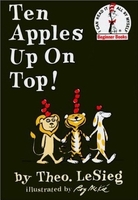I am a huge fan of both Mac Barnett and Chris Van Dusen, so I was really excited when I saw that they had teamed up for a new book.
President Taft is Stuck in the Bath
Written by Mac Barnett
Illustrated by Chris Van Dusen
Perfect for 4-8 years old


The book is based on a rumor that President Taft got stuck in the bathtub during his stay at the White House. It is hard to tell whether or not this rumor is true, but there are a number of different stories to be told about the occasion. Some say that multiple men had to pry him out of the bathtub, and some say that loblolly (butter and lobster liver) was needed. Mac Barnett uses the possible incident as a basis for his wild romp that brings the whole cabinet on board.
After a great number of attempts to heave himself out of the bathtub, President Taft realizes he is STUCK. His wife comes to check on him, and despite his original attempts to hide it from her, he tells her the truth. When he sees that she doesn't know what to do, he asks for the Vice President. The Vice President's solution is for himself to be sworn in as President. President Taft views this as "prepostorous", and the Secretary of State is called in. He suggests diet and exercise.
More and more cabinet members are summoned, and each one offers a {fitting} recommendation according to his office in the cabinet. It reminds me a lot of King Bidgood in the Bathtub and how the royal court was involved in the dilemma.
How did they finally free him from the bathtub in this story? Well, you'll just have to check it out to find out. I greatly enjoyed Chris Van Dusen's caricatured illustrations. They were a perfect match for the exaggerated telling of this old rumor and possible piece of White House history.
The last two pages of the story include a picture of the large bathtub that President Taft had brought in to the White House (which could hold four men!), along with facts relating to President Taft and bathtubs. He sounds a lot like myself and King Bidgood: we all love a good bath.
I think it is a great read for families, as well as any class learning about the Executive Cabinet. It brings a light and humorous view to the White House.
*I would recommend doing some research on President Taft with your children/students to study up on his life and accomplishments. He has a really interesting history!*
Candlewick Press was kind enough to provide a review copy. All opinions expressed are my own.
Happy Reading!




























